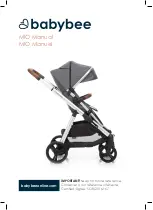
6-3
elements are reliable and widely available. Heating elements are also easy to replace, and
the ratings are stable.
NOTE: Do not use light bulbs, motors, or other electrical devices for diversion loads.
These loads will fail or cause the SunStar to disconnect the load. Only heating
elements should be used.
Water heating elements are typically 120 volts. Elements rated for 12, 24 and 48 volts are
also available, but more difficult to source. The derating for 120 volt heating elements is
discussed in 6.4.3 below.
6.4.2 Definition of Terms
Maximum Source Current:
This is the maximum current output of all the energy sources (hydro, wind, solar, etc.)
added together. This current will be diverted through the SunStar to the diversion load.
Maximum Battery Voltage:
This maximum voltage is the PWM regulation voltage selected with the DIP switches, plus
the increase with an equalization, plus the increase due to lower temperatures. The highest
battery voltage is commonly 15, 30 and 60 volts for 12-, 24- and 48-volt systems.
Peak Load Current:
At the maximum battery voltage, this is the current the diversion load will draw. This peak
load current must not exceed the SunStar’s rating.
NOTE: Because the battery can supply any size load, the peak load current is not
limited by the source (hydro or wind rating). The diversion load’s power rating is the
critical specification for reliable battery charging.
6.4.3 Load Power Ratings
The power rating of the diversion load will depend on the voltage of the battery being
charged. If the heating element is not rated for the same voltage as the diversion system, the
power rating of the load must be adjusted to the diversion system’s voltage.
The manufacturers typically rate the heating elements for power at a specified voltage. The
peak load current at the load’s rated voltage will be the power divided by the rated voltage
(I = P / V). For example: 2000W / 120V = 16.7 amps of current.
If the load is being used at a voltage less than the load’s rated voltage, the power can be
calculated by the ratio of the voltages squared. For example, a 120 volt 1000 watt heating
element being used at 60 volts:
1000W x (60/120)2 = 250 watts
The 1000W element will only dissipate 250W when being used at 60 volts.
NOTE: The loads (heating elements) can be used at the manufacturer’s voltage rating,
or at a lower voltage. Do not use the load at a higher voltage than the load’s rating.










































